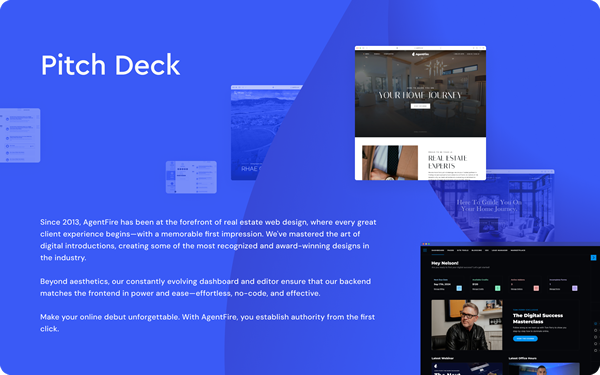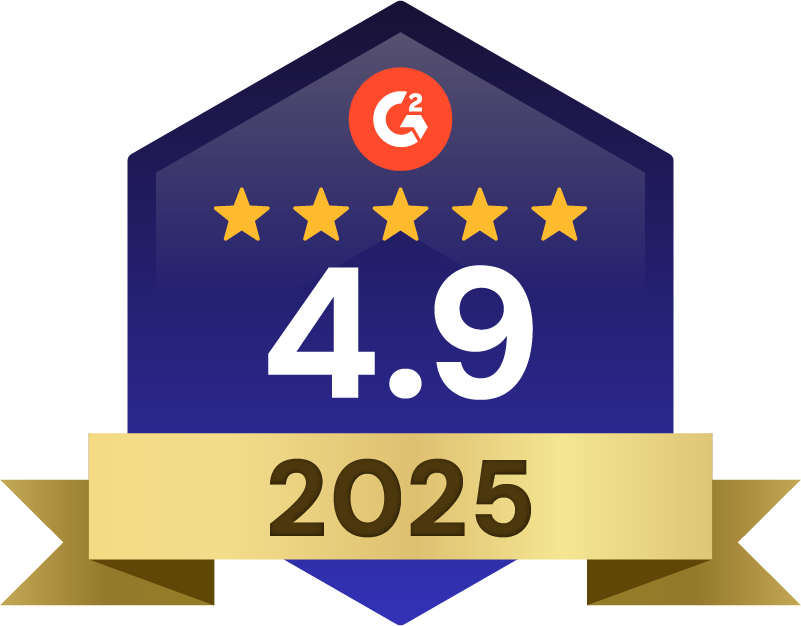Email drip campaigns automate messages to nurture leads, onboard users, and increase engagement. Learn how to build effective sequences that convert.
Content Marketing Email Marketing
Email drip campaigns are automated email sequences sent to subscribers based on timing or specific actions. They’re one of the most effective ways to nurture leads, onboard customers, and build lasting relationships without constant manual work.
In this guide, we’ll explore what makes drip campaigns work, why they’re valuable for your business growth, and share 15 proven examples you can adapt for your own marketing strategy.
Whether you’re completely new to email marketing or looking to improve your current approach, these examples will help you create more effective campaigns that connect with your audience.
What Is a Drip Email Campaign?
A drip email campaign is a series of pre-written emails that go out automatically based on specific triggers or schedules. Unlike one-off email blasts, drip campaigns deliver the right message at the right time based on how people interact with your business.
Think of drip campaigns like a conversation that unfolds naturally over time. Each email builds on the previous one, guiding recipients toward a specific goal — whether that’s making a purchase, signing up for a demo, or staying engaged with your content.
The “drip” part of the name comes from how these emails are delivered: steadily over time, like a drip irrigation system that waters plants consistently rather than flooding them all at once.
Key components of drip campaigns include:
- Automation: Emails send automatically based on triggers you set up
- Sequencing: Messages follow a logical order that guides recipients toward an action
- Personalization: Content adapts based on subscriber data and behaviors
- Timing: Carefully spaced delivery prevents overwhelming subscribers
For example, when someone signs up for your newsletter, they might receive a welcome email immediately, followed by an introduction to your services three days later, and then a special offer a week after that.
Why Drip Marketing Matters for Growth
Drip marketing campaigns can transform how you connect with leads and customers. They create consistent touchpoints that keep your brand top of mind while moving people closer to making decisions.
The beauty of drip campaigns is that they work while you focus on other aspects of your business. Once set up, they deliver personalized messages automatically, making your marketing more efficient and effective.
Here’s why drip campaigns are so valuable:
- They save time: Write emails once, then let automation deliver them to the right people at the right time.
- They increase engagement: Regular, relevant communication keeps subscribers interested in your brand.
- They boost conversions: Targeted messages that match where people are in their journey lead to better results.
Drip campaigns are able to generate more sales at a lower cost compared to single email blasts because they nurture relationships over time rather than asking for immediate action from cold prospects.
For real estate professionals, drip campaigns are especially powerful for nurturing leads who aren’t ready to buy or sell yet but will be in the future.
How to Create Effective Drip Campaigns
Creating effective drip campaigns requires planning and strategy. Follow these steps to build campaigns that connect with your audience and drive results:
1. Set Clear Campaign Goals
Every successful drip campaign starts with a specific goal. Before writing a single email, decide what you want to accomplish.
Common drip campaign goals include:
- Welcoming new subscribers
- Nurturing leads through the buying process
- Onboarding new customers
- Re-engaging inactive contacts
- Promoting special offers or events
For example, if you’re a real estate agent, you might create a drip campaign to nurture first-time homebuyers with educational content about the buying process.
2. Segment Your Audience
Not all subscribers need the same information. Dividing your email list into segments helps you send more relevant content that resonates with different groups.
You can segment based on:
- Demographics (location, age, etc.)
- Behavior (website visits, previous purchases)
- Engagement level (active vs. inactive)
- Position in the buying journey (new lead vs. ready to purchase)
A real estate example: Create separate drip campaigns for buyers versus sellers, or for luxury home shoppers versus first-time buyers.
3. Plan Your Email Sequence
Map out each email in your sequence, including when it will send and what action you want recipients to take.
For a basic welcome sequence, you might include:
- Welcome email (sends immediately after signup)
- Educational content (sends 2 days later)
- Social proof/testimonials (sends 5 days later)
- Special offer (sends 7 days later)
The timing between emails matters. Too frequent, and you risk annoying subscribers. Too infrequent, and they might forget about you.
4. Create Compelling Content
Each email should provide value while moving recipients toward your campaign goal. Focus on clear, concise writing with one main message per email.
Include these elements in your emails:
- Attention-grabbing subject lines
- Personalization (recipient’s name, relevant details)
- Valuable content (tips, information, resources)
- Clear call-to-action
Remember to maintain consistent branding across all emails in your sequence.
5. Set Up Tracking and Optimization
Once your campaign is live, track key metrics to measure its performance:
| Metric | What It Tells You |
|---|---|
| Open rate | How compelling your subject lines are |
| Click-through rate | How engaging your content and CTAs are |
| Conversion rate | How effective your campaign is at achieving goals |
| Unsubscribe rate | How relevant your content is to subscribers |
Use this data to improve future campaigns by testing different approaches and refining what works best.
15 Powerful Drip Campaign Examples
As simple as drip campaigns are, there are myriad ways to go about them. Here are 15 proven drip campaign examples you can adapt for your business:
1. Welcome Sequence
A welcome sequence introduces new subscribers to your brand and sets expectations for future communications.
When to use it: Send immediately after someone joins your email list
What to include:
- A warm greeting and thank you
- Brief introduction to your brand
- What they can expect from your emails
- Quick win or immediate value
For real estate agents, this might include a neighborhood guide or market report as the immediate value.
2. Lead Nurturing Campaign
Lead nurturing campaigns provide valuable content to prospects who aren’t ready to buy yet.
When to use it: For new leads who need more information before making a decision
What to include:
- Educational content about your industry
- Answers to common questions
- Case studies or success stories
- Gradual introduction to your services
For example, a real estate agent might send a series of emails about the home buying process, mortgage options, and how to prepare finances.
3. Cart Abandonment Sequence
This sequence is typically leveraged for consumer products by targeting shoppers who added items to their cart but didn’t complete the purchase. For real estate, this approach can be adapted for incomplete property inquiries or search profiles.
When to use it: Within 24 hours of “cart abandonment”
What to include:
- Reminder of property inquiry or search query
- Testimonials or reviews
- Information on limited-time opportunities, like upcoming open houses
- Clear link back to the listing or your contact form
4. Re-engagement Campaign
Re-engagement campaigns aim to win back leads who haven’t opened or clicked your emails recently.
When to use it: After 60-90 days of inactivity
What to include:
- “We miss you” messaging
- Reminder of benefits
- Special offer to come back
- Option to update preferences
Real estate agents can use these to reconnect with past clients or leads who went cold.
5. Event Follow-up Sequence
This campaign nurtures relationships after someone attends your event, webinar, or open house.
When to use it: Within 24 hours of the event
What to include:
- Thank you for attending
- Recap or resources from the event
- Next steps or related opportunities
- Invitation for feedback
Perfect for following up after open houses or homebuyer seminars.
6. Educational Series
Educational series provide valuable information over time, positioning you as a trusted authority.
When to use it: For new subscribers or leads interested in a specific topic
What to include:
- Step-by-step guidance
- Tips and best practices
- Resources and tools
- Subtle introduction to your services
In real estate, this could look like, “5-part guide to selling your home for maximum value”
7. New Client Onboarding
Onboarding sequences help new clients get the most value from your product or service.
When to use it: Immediately after agreement
What to include:
- Welcome and congratulations
- Getting started instructions
- Tips for success
- Support resources
For real estate, this might be a sequence for new clients who just signed a listing agreement.
8. Seasonal Campaign
Seasonal campaigns tie into specific times of year or holidays with relevant content and offers.
When to use it: Leading up to seasonal events or holidays
What to include:
- Seasonal tips or advice
- Relevant content for the season
- Countdown elements for urgency
Real estate example: “Spring home selling tips” or “Holiday home decoration ideas”
9. Product Launch Sequence
This campaign builds excitement for a new product, service, or listing.
When to use it: 1-2 weeks before launch
What to include:
- Teaser content
- Benefits and features
- Early access or special offers
- Launch announcement
Real estate agents can use this for new property listings or service offerings.
10. Testimonial Campaign
Testimonial campaigns showcase success stories to build trust with prospects.
When to use it: For leads in the consideration phase
What to include:
- Client success stories
- Before and after scenarios
- Specific results achieved
- Subtle call to action
Real estate example: Sharing stories of families who found their dream homes or sellers who got above asking price.
11. Local Market Update
This campaign provides valuable local information to position you as a neighborhood expert.
When to use it: Monthly or quarterly
What to include:
- Local market statistics
- Neighborhood news
- Recent sales
- Predictions or trends
Perfect for real estate professionals building hyperlocal authority.
12. Anniversary Campaign
Anniversary campaigns celebrate milestones in your relationship with clients.
When to use it: On sell or purchase anniversaries
What to include:
- Personalized congratulations
- Reflection on the relationship
- Special anniversary offer
- Thank you message
For real estate, this might celebrate home purchase anniversaries or client relationship milestones.
13. Feedback Request Sequence
This campaign gathers valuable insights from customers or subscribers.
When to use it: After a sale, service completion, or specific time period
What to include:
- Thank you message
- Short, focused survey
- Incentive for participation
- What you’ll do with the feedback
Real estate agents can use this after closing transactions or at regular intervals with current clients.
14. Referral Campaign
Referral campaigns encourage existing customers to recommend your business to others.
When to use it: After positive experiences or milestones
What to include:
- Appreciation for their business
- Simple referral process explanation
- Incentives for both parties
- Success stories from referrals
This is especially valuable in real estate, where referrals drive significant business.
15. Value-Add Content Series
This campaign provides ongoing value without directly selling, building goodwill and authority.
When to use it: For nurturing long-term relationships
What to include:
- Helpful tips and resources
- Local insights
- Answers to common questions
- Subtle brand reinforcement
Real estate example: Monthly home maintenance tips or investment property insights.
Drip Campaign Best Practices
To get the most from your drip campaigns, follow these best practices:
- Keep emails concise: Focus on one main message per email with clear action steps.
- Personalize beyond names: Use behavioral data and preferences to truly customize content.
- Test and optimize: Regularly test subject lines, content, and timing to improve results.
- Maintain clean lists: Remove unengaged subscribers to improve deliverability.
- Respect frequency: Don’t overwhelm subscribers with too many emails too quickly.
Remember that drip campaigns should feel like a natural conversation, not a series of sales pitches. Each email should provide value whether or not the recipient takes immediate action.
AgentFire’s platform includes tools to help real estate professionals create effective drip campaigns that nurture leads and build lasting relationships. To learn more about implementing these strategies with AgentFire, book a demo.
FAQs About Email Drip Campaigns
What’s the difference between drip campaigns and regular email marketing?
Drip campaigns are automated sequences triggered by specific actions or timeframes, while regular email marketing often consists of one-time broadcasts sent to your entire list simultaneously.
How many emails should I include in a drip campaign?
Most effective drip campaigns include 4-7 emails spaced appropriately based on your specific goals and audience engagement patterns.
How do I know if my drip campaign is working?
Track key metrics including open rates, click-through rates, and conversion rates to determine effectiveness. Look for engagement trends across the sequence rather than judging by single emails.
Can I use drip campaigns for both prospects and existing customers?
Yes, drip campaigns work well for both prospects and customers. Simply adjust your messaging and goals based on where people are in their relationship with your business.
How often should I update my drip campaigns?
Review your drip campaigns quarterly to ensure information is current and messaging aligns with your business goals. Update immediately if services change or content becomes outdated.






